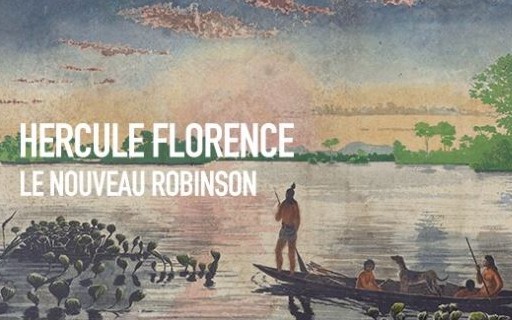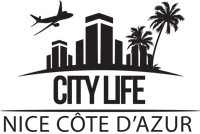Hercules Florence. The new Robinson - Villa Paloma
- 17 March - 24 September 2017

Hercules Florence, Sem titulo (canoa Guatos, ao por-do-sol), ca. 1835, watercolor and China ink on paper, 32 x 43.5 cm - Collection C. H. Florence - Leila and Silvia Florence
Life and plans for a monegasque inventor of the 19th century to the Brazil
17 March - September 24, 2017NMNM Villa Paloma56 boulevard of the exotic garden
This project shows the result of a five year research devoted to the work of the inventor and artist Monegasque-Brazilian Hercule Florence (1804-1879), presenting it for the first time to the European public. Linda Fregni Nagler and Cristiano Raimondi assured the Commissioner of this exhibition, which is accompanied by a publication bringing together many international contributions.
Inventor of the zoophonie, rating system music of the singing of birds, and the printing industry, method of printing based on the principles of photography, Hercule Florence devised a photographic process from 1833 to the Brazil, regardless of research carried out in Europe at the time, and was the first to use the term of 'photograph'.
The exhibition brings together about 400 works, mostly drawings and manuscripts from for most of the collection C. H. Florence - Leila and Silvia Florence, in São Paulo. Other private or public institutions have lent significant pieces: Accademia delle Scienze, Turin; Archives of the Palace, Monaco; Geneva Library; National Library of France, Paris; DRUNK science, Interuniversity library of Montpellier; Instituto Hercule Florence, São Paulo; Instituto Moreira, Rio de Janeiro; Kingston Museum and Heritage Service Kingston upon Thames; Museum of the quay Branly - Jacques Chirac, Paris; Nicéphore Niépce, Chalon City Museum; Museu Paulista, Universidade São Paulo; Science Museum, London; UNICAMP, Universidade Estadual Campinas, São Paulo.
Through this intense research the NMNM was able to codify, inventory and produce nearly two thousand digital files of the elements of the CollectionC. H. Florence - Leila and Silvia Florence (São Paulo) spread mainly by typology of documents: drawings, prints, letters, manuscripts, photographs, and publications... Beyond this inventory work, scanning was essential to more than one title, don't to protect this collection, identify it and share it with interested researchers to study it, publish it and expose it.
The drawings and manuscripts of Hercule Florence, as well as the first photographic copy of the history of the Americas gathered for the first time in a same exhibition. This very complete panorama allows you to trace the development of thought and labor of Hercules Florence. His method, which passes through the copy, design and reproduction, manually or automatically, is the central theme of the exhibition. The need to reproduce his own works in numbers led Florence to invent printing systems that could offer an alternative to burning, such as photography.
The project wants to make this famous character its proper place in the history of culture, and especially photography, showing the relationship between his approach and that of his peers. A work on the origins of photography can take a big step forward in the understanding of this complex figure.
In addition to the corpus of works of Hercules Florence are presented of the works commissioned for the exhibition artists such as Lucia Koch, Jochen Lempert, Leticia Ramos and Daniel Steegmann Mangrane. The artists were selected for their ability to establish a relationship between their own practice and other disciplines such as biology, history, the history of techniques and meteorology. The exhibition also focuses on disciplinary openness and the scientific aspect of contemporary research and proposes a conception of art as a systematic exploration of methodological and experimental research.
Hercules Florence, biographyHercules Florence was born in Nice in 1804, in a family whose part was from the Principality of Monaco. His father is doctor, military and amateur painter; his mother also has a taste for art. Positivism and romanticism of the 19th century play an important role in his education and speak together in his discovery of distant lands.
Florence young emigrated to Brazil in 1824 and, the following year, integrated as an Illustrator the Langsdorff expedition, sponsored by the tsar Alexandre Ier to explore Mato Grosso. Conducted by the Russian naturalist Georg Heinrich von Langsdorff, she embarked in São Paulo to Pará, in the Amazon and take epic dimensions: Langsdorff travels 17 000 km in five years and collecting an impressive amount of information on the Flora, fauna and and indigenous tribes of the Amazon. The large volume of documents reported expedition was sent to the Academy of sciences of St. Petersburg, to finally fall into oblivion for more than a century.
Édouard Ménétries, Ludwig Riedel, Christian Hasse and Nester Roubtsov scientists participate in the expedition to many zoological, botanical, astronomical and cartographical observations. In order to describe and illustrate their discoveries, Langsdorff attaches painters Hercule Florence, Johann Moritz Rugendas and Adrien Taunay services. Hercules Florence drawing plants, animals, but also Indian tribes who sometimes had never been represented before. He is also the only one to keep a diary of the expedition. During this mission full of uncertainties and dangers, he becomes aware of his talents of scientist and inventor.
After the Langsdorff expedition, in 1830, he moved with his first wife, Maria Angélica, in the small town of São Carlos (now Campinas), where he worked in coffee production. Widowed, he married Carolina Krug, founder of an Institute for women who played a decisive role at the time by defining new principles of education and lengthening the duration of schooling. Until his death in 1879, Hercules Florence writes scientific texts and his journal where he analyzes and details his research on new printing processes, among others the polygraph and the pulvographie, as well as on photography, field in which he is today considered as a precursor. The photochemical process that he uses in 1833 was tested with success in 1976, in a laboratory at the Rochester Institute of Technology, at the request of Boris Kossoy. It should be noted that the Florence process was the only experience of this type carried out in Latin America at the time and she is left ignored for hundred and forty years.
Hercules Florence also devotes himself to other inventions such as the 'Noria hydrostatic' and the 'inimitable paper' watermarked paper he proposes to adopt as the Brazilian national currency. He made a series of drawings reflecting the agricultural activities North of São Paulo, which illustrates the process of cultivation of the coffee then linked to slavery and deforestation. It is finally developing a 'Picturesque Atlas of the skies', inventory of amazing watercolors of clouds in the sky of Campinas, intended to provide models for painters.

 StayHostel, ...
StayHostel, ... VisitMuseums, ...
VisitMuseums, ... Go outRestaurants, ...
Go outRestaurants, ... ShopsFashion, ...
ShopsFashion, ... LeisuresBeaches, sports, ...
LeisuresBeaches, sports, ... ServicesTourism, ...
ServicesTourism, ...






